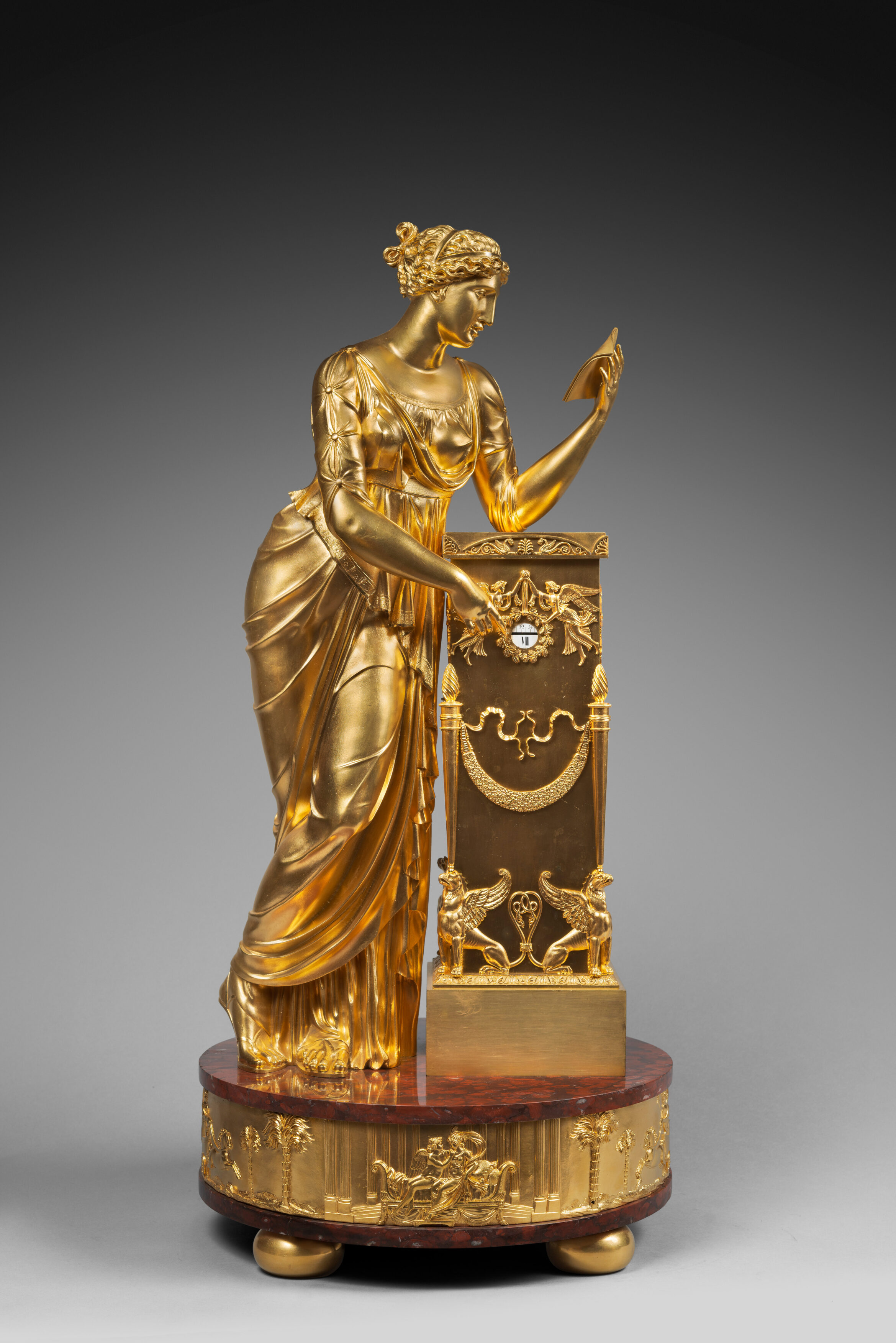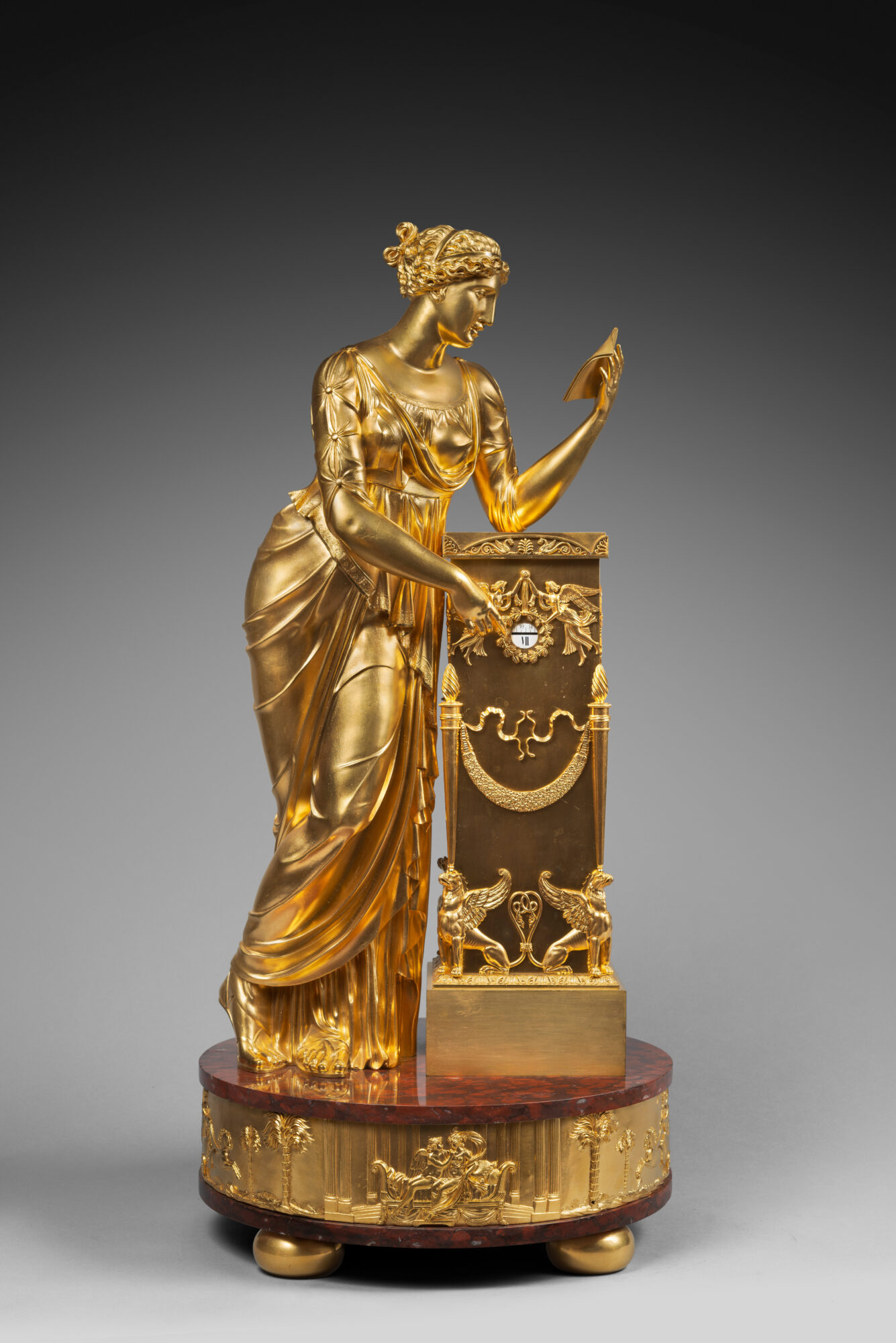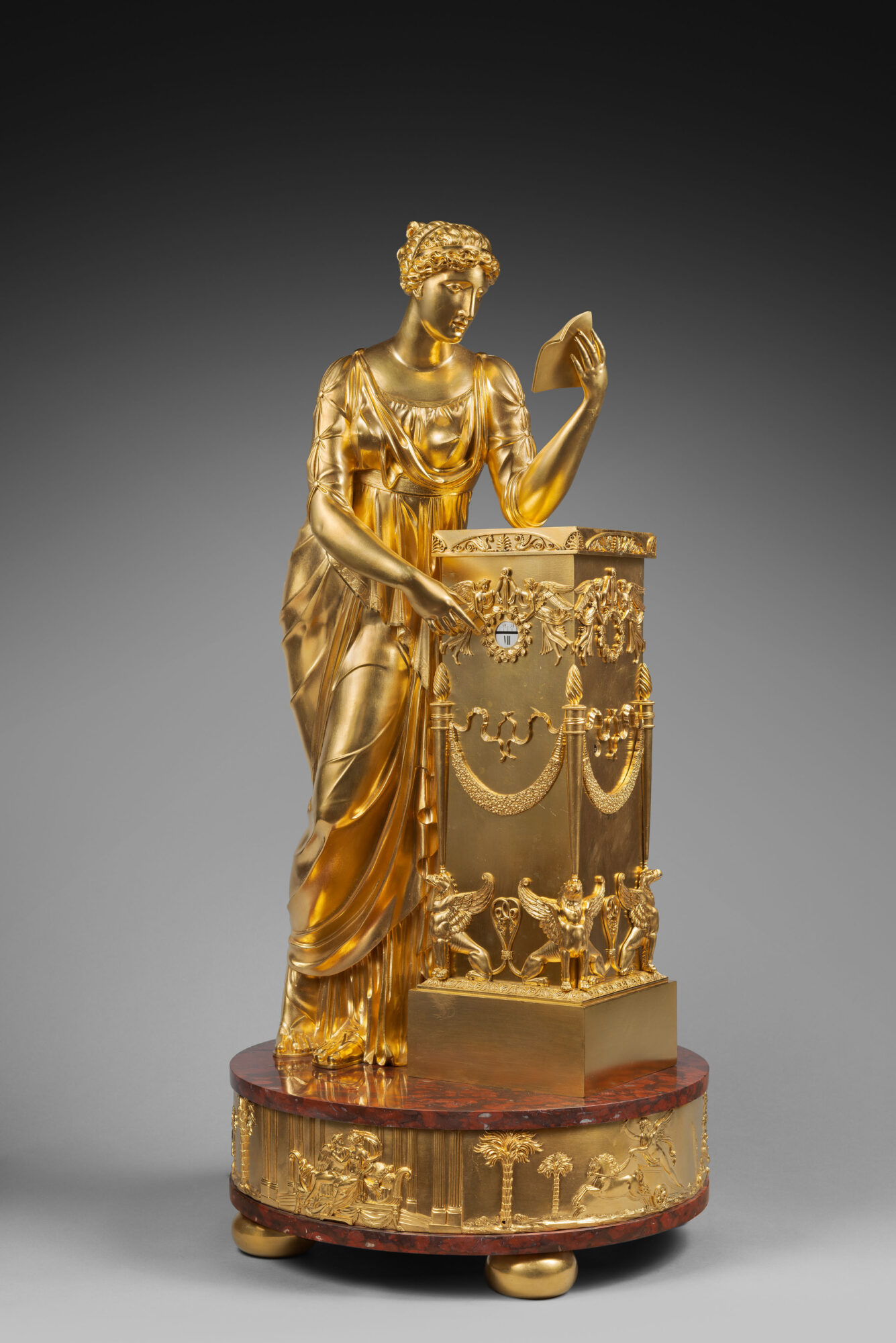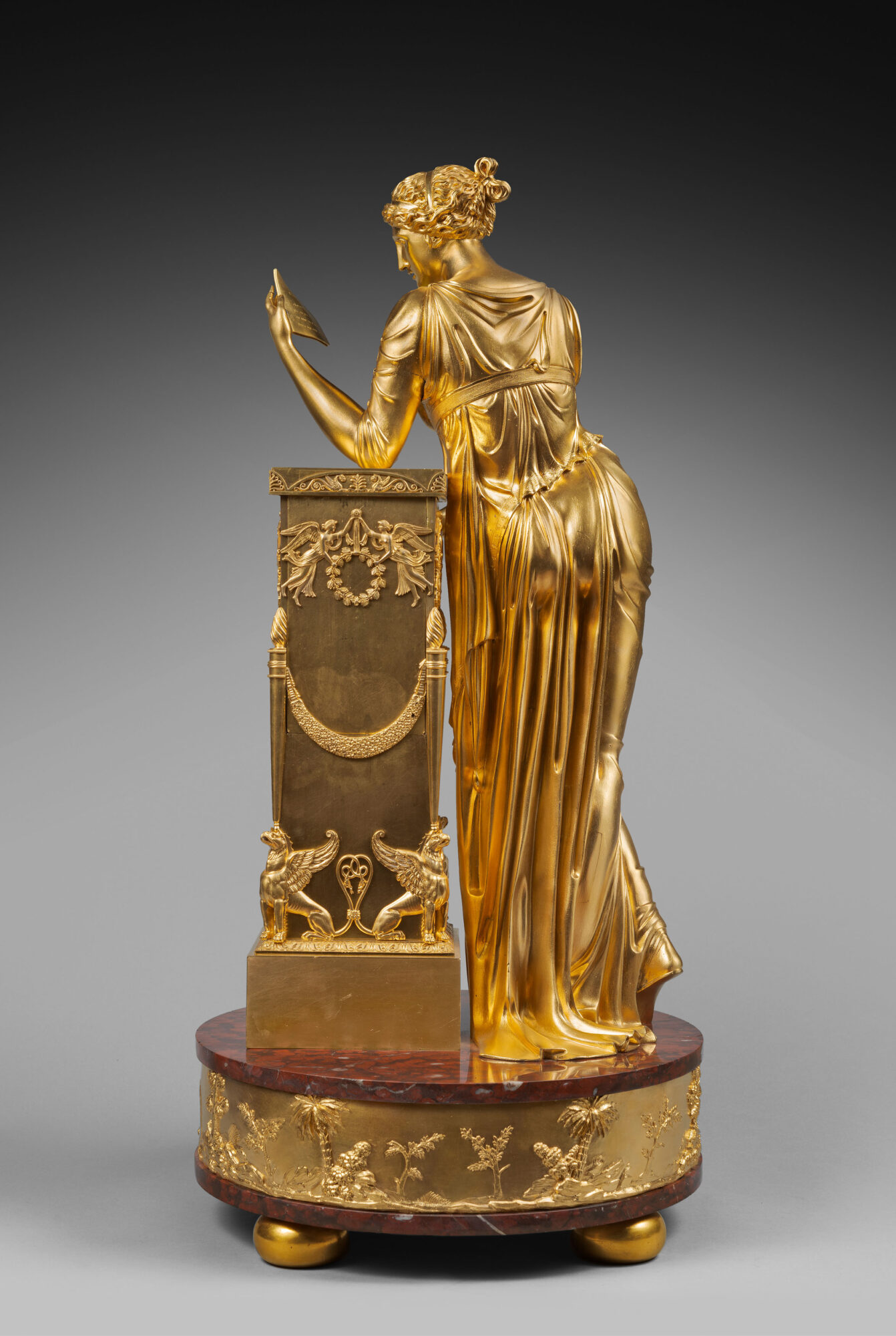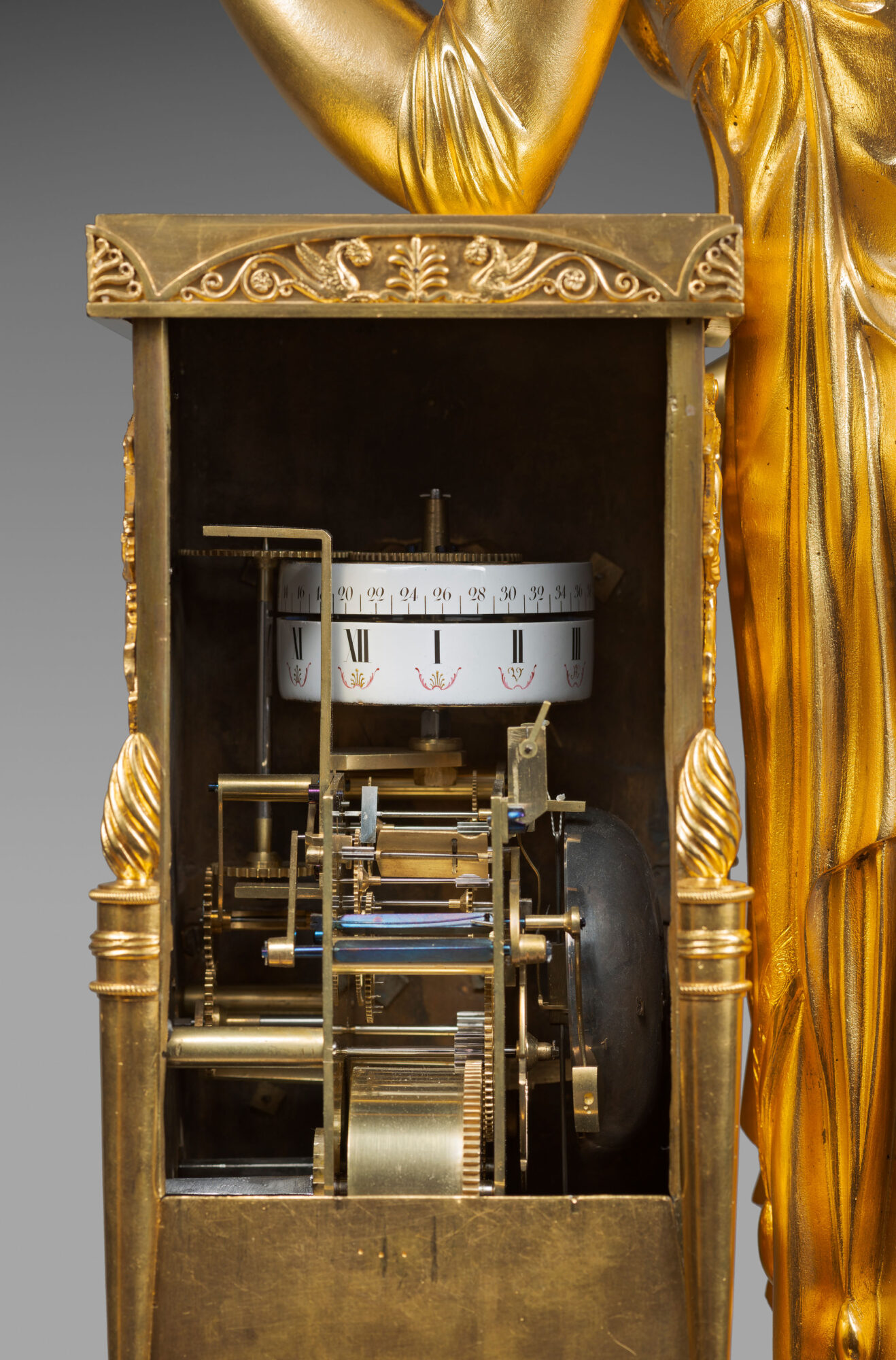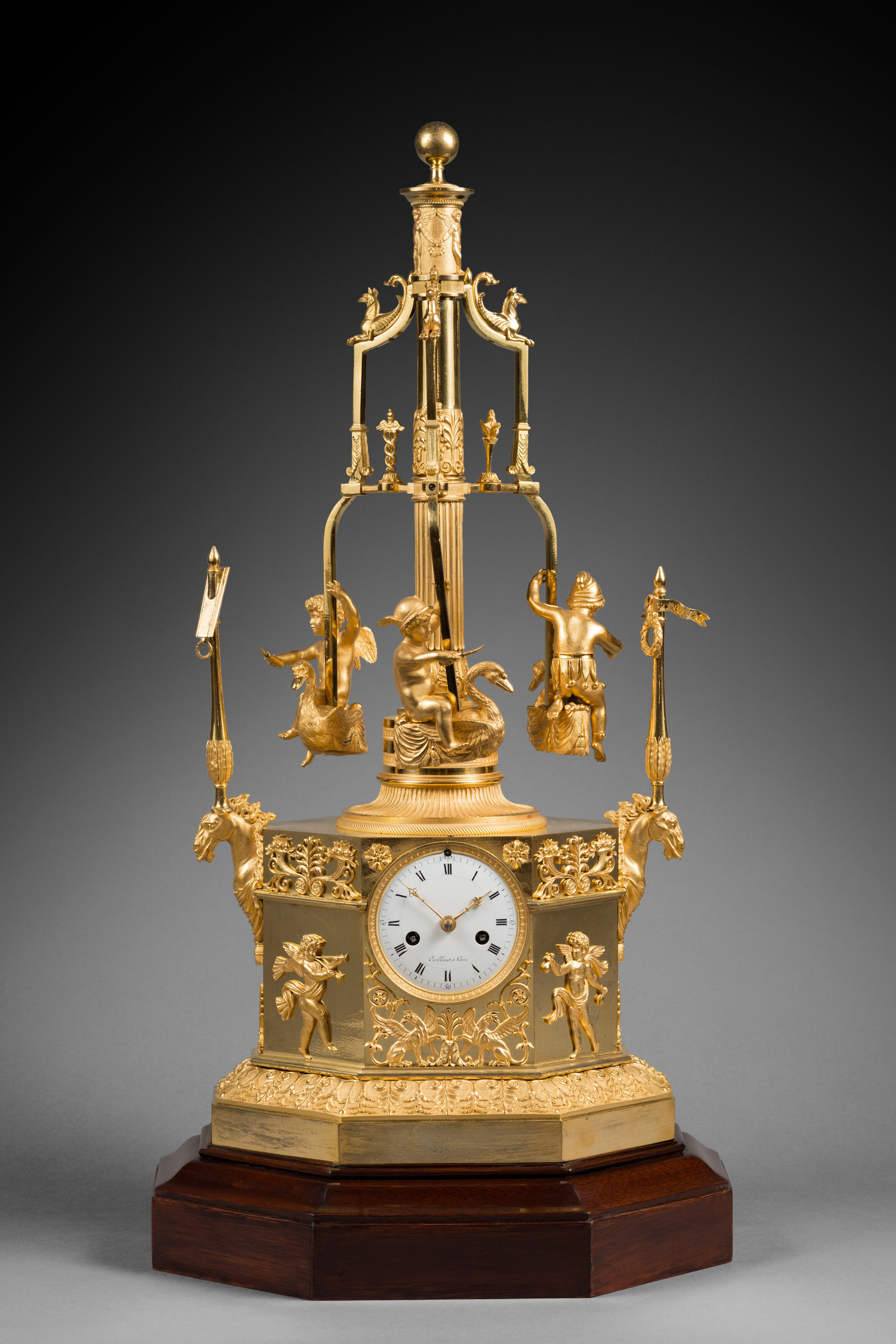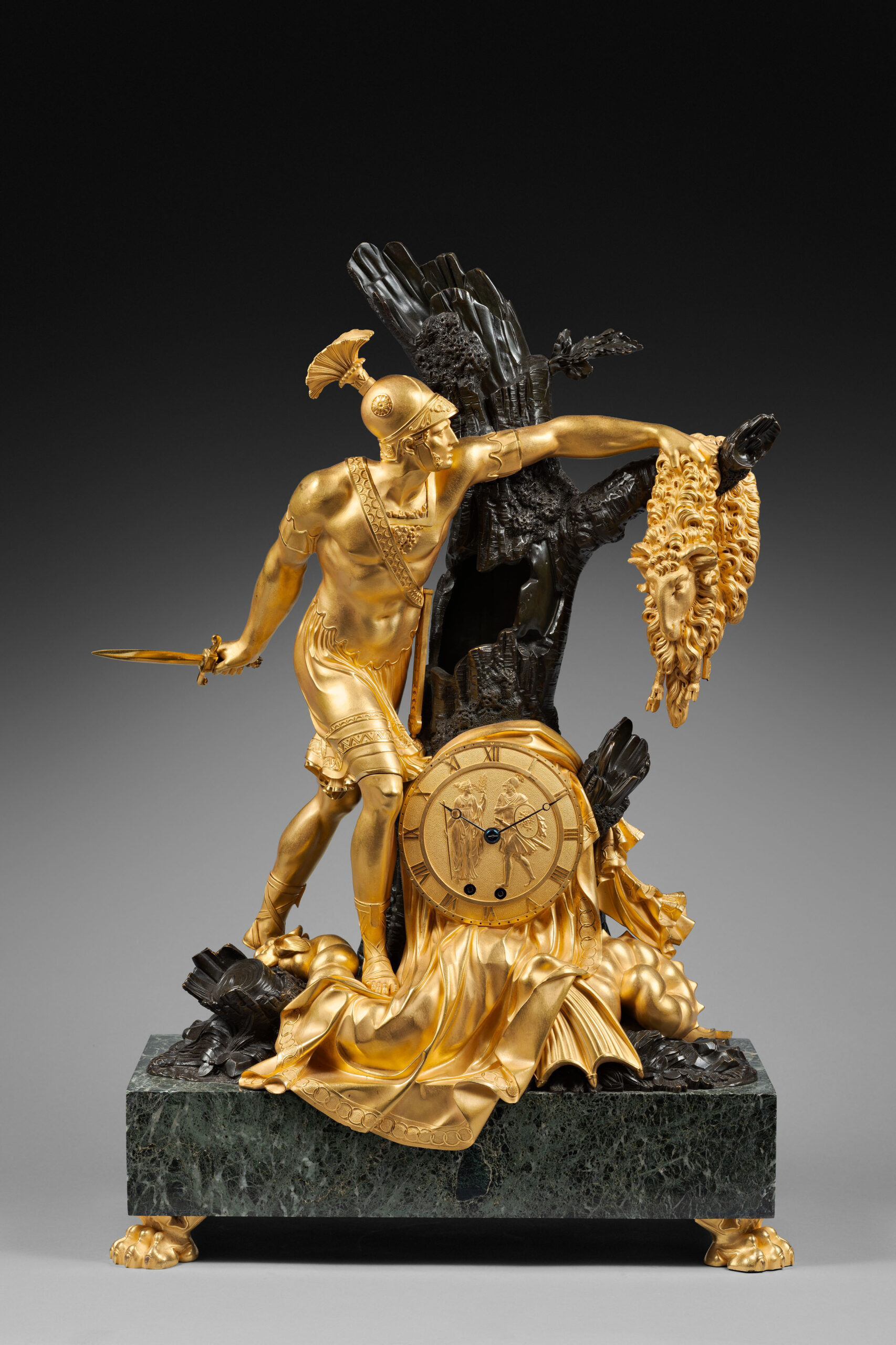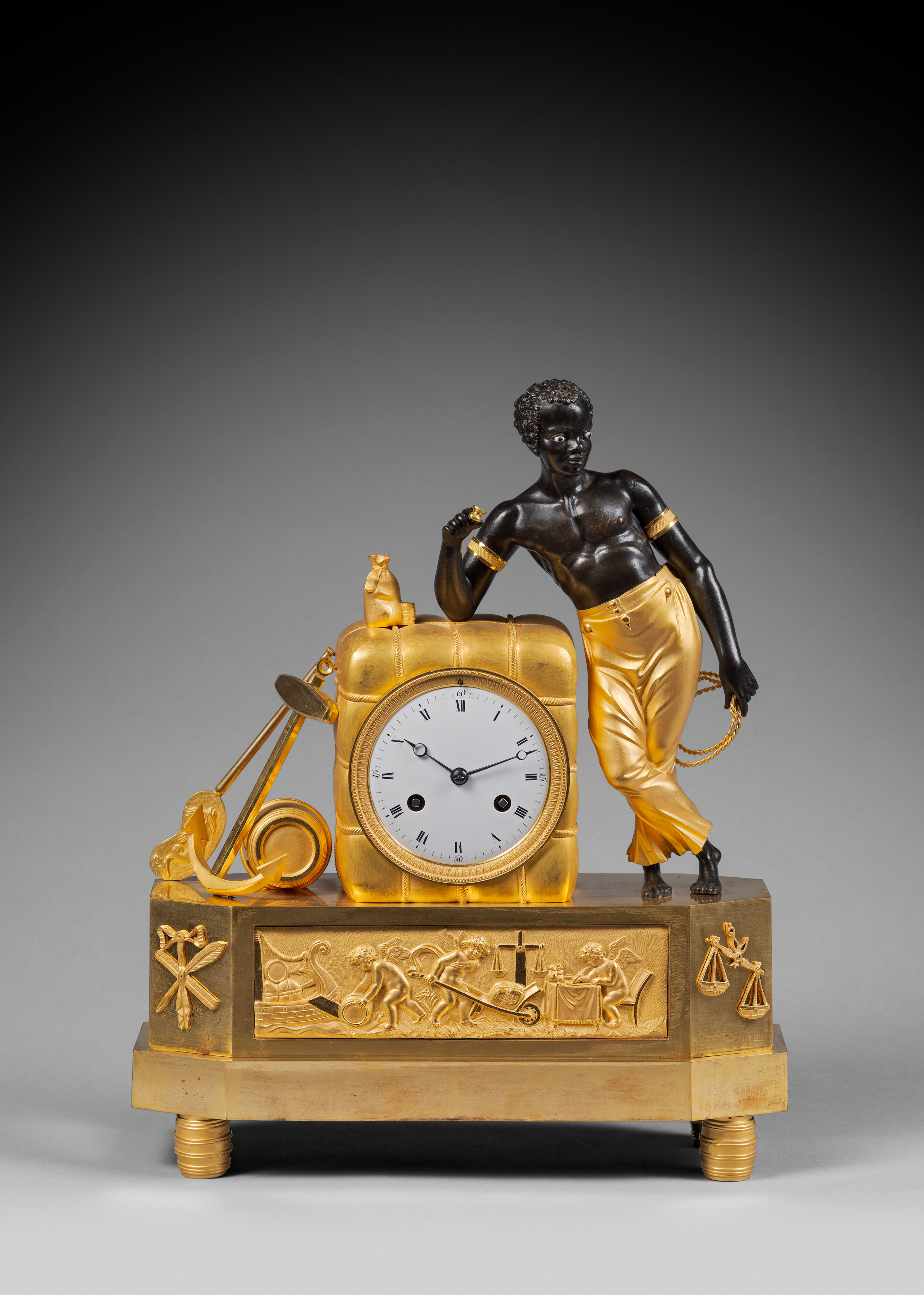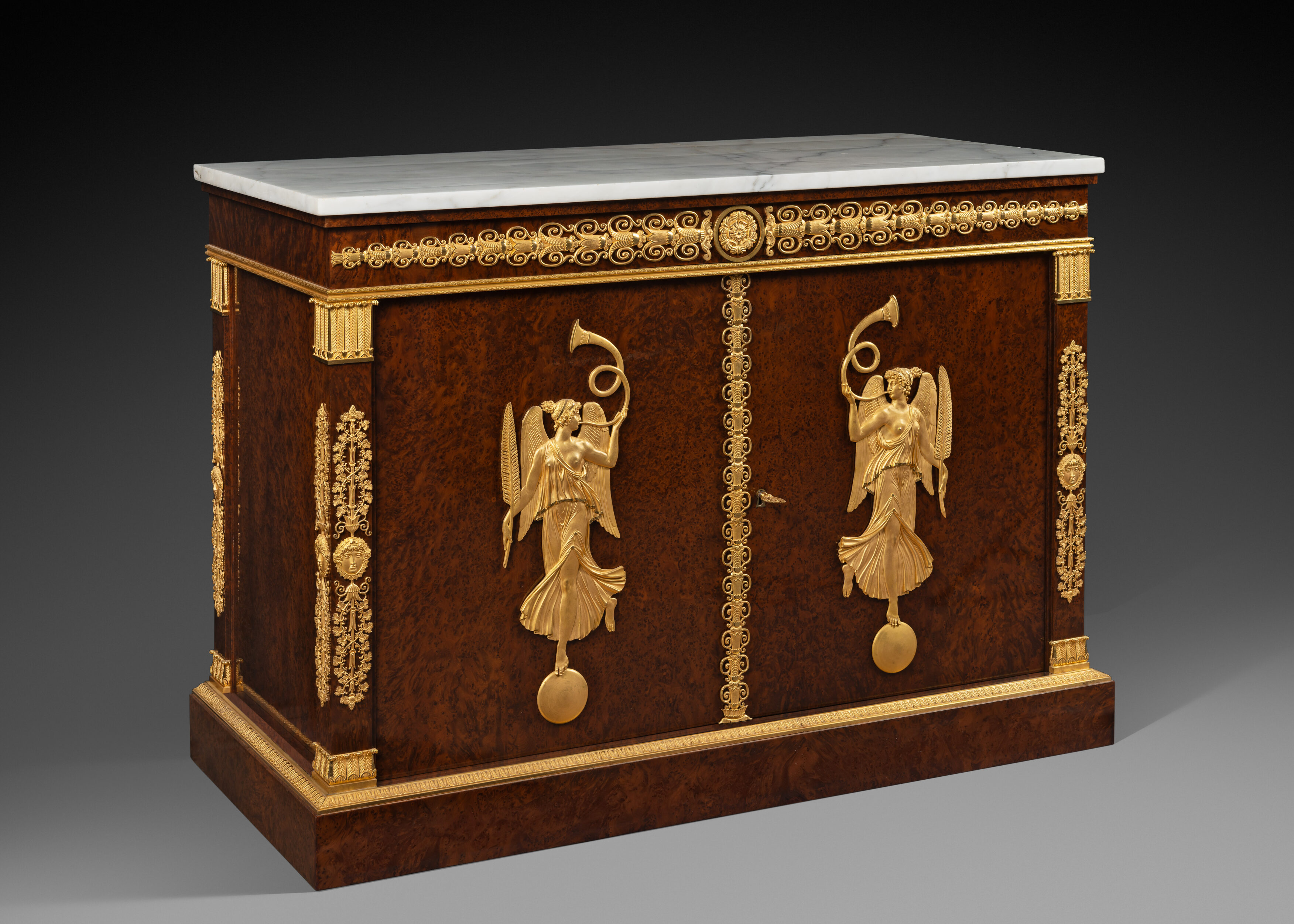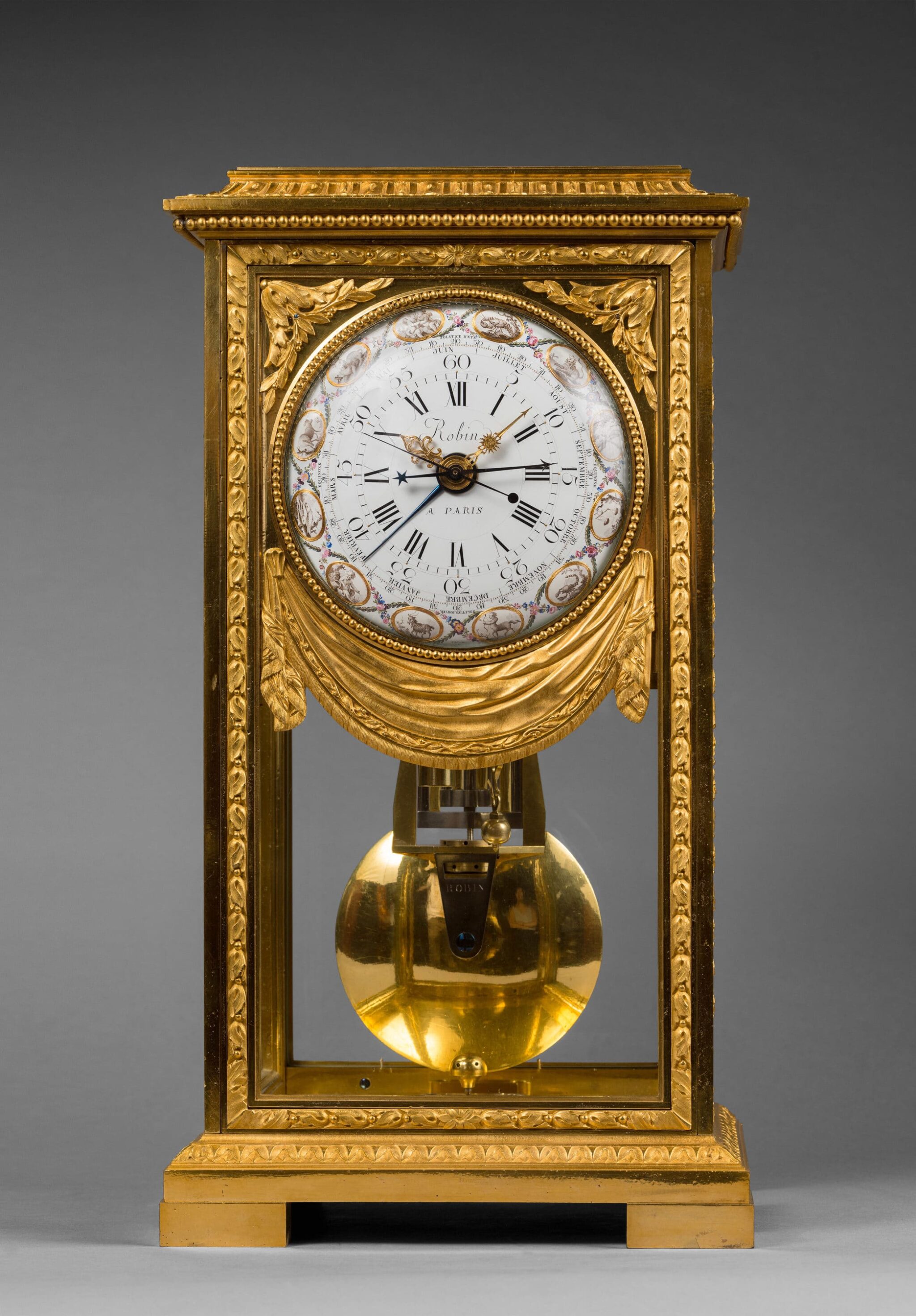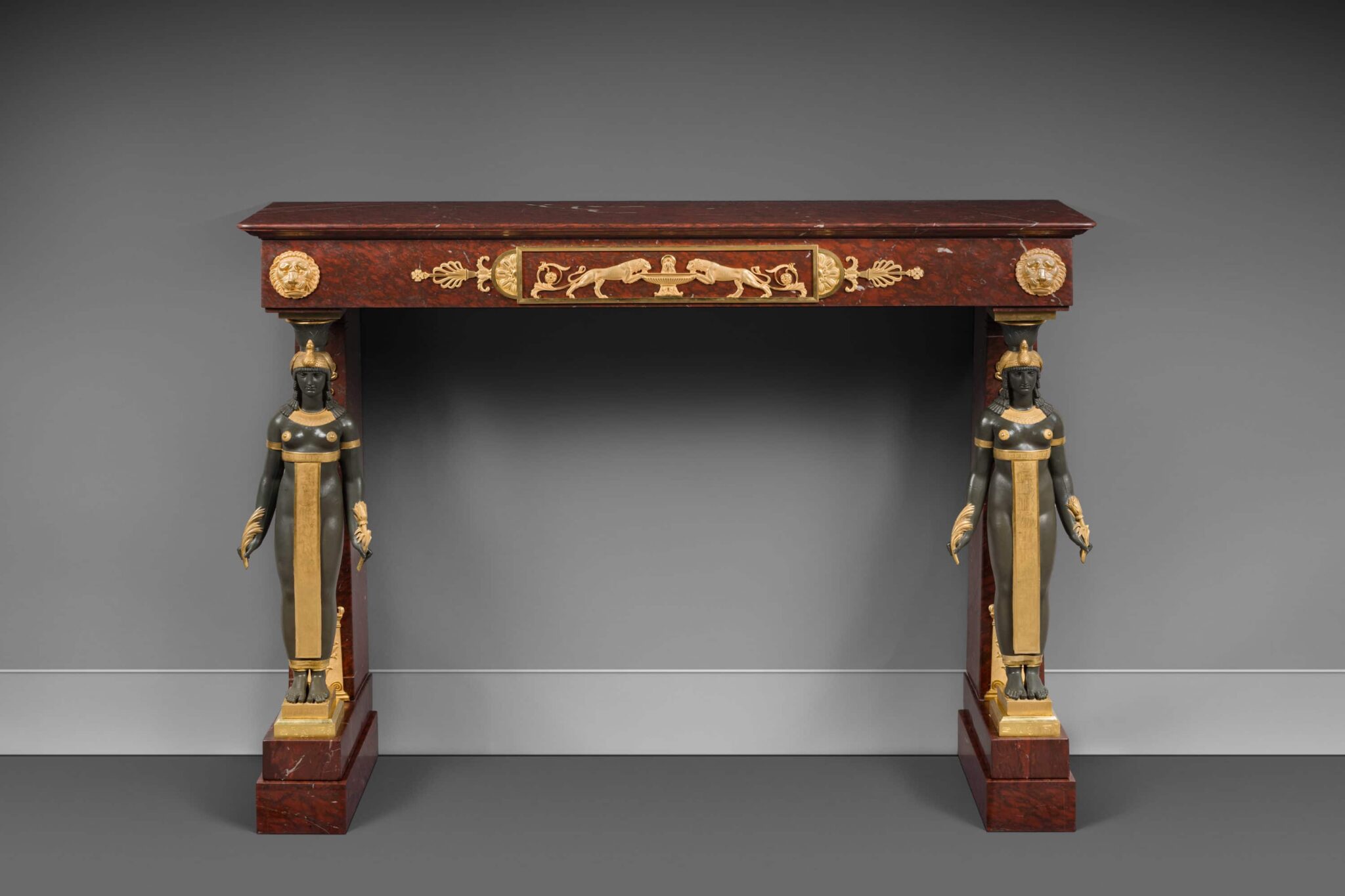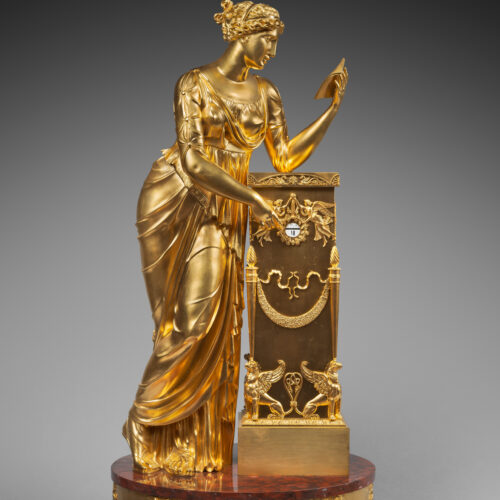Important Monumental Matte Gilt Bronze and Red Griotte Marble Mantel Clock
“The Reader”
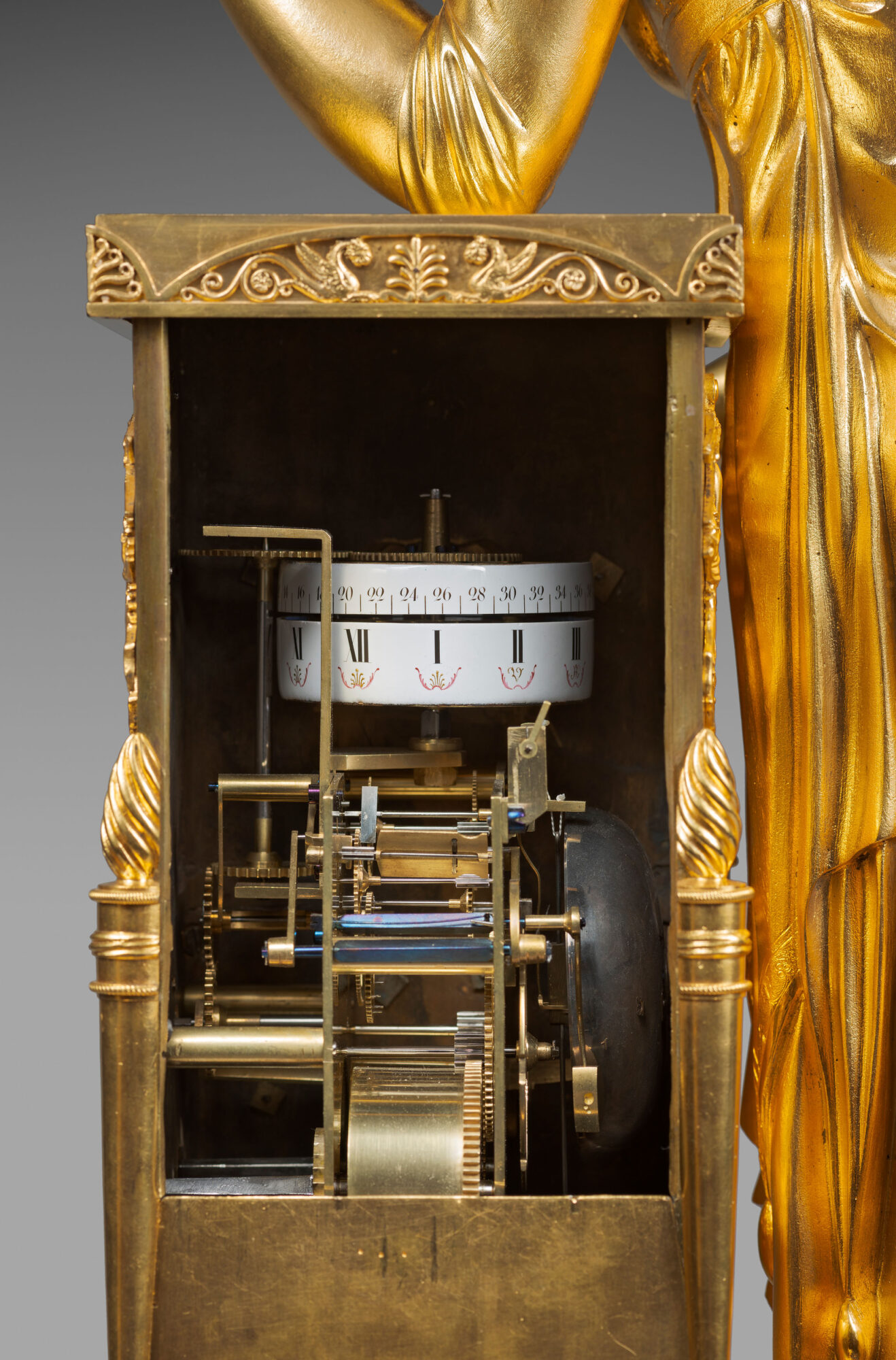
Attributed to Pierre-Philippe Thomire
Paris, Empire period, circa 1810
Provenance:
– Probably purchased by Charles-Maurice de Talleyrand-Périgord, Prince of Benevento, to furnish his Parisian mansion and the Château de Valençay
– Probably his nephew, General Alexandre-Edmond de Talleyrand-Périgord
– His son, Louis Duke de Talleyrand-Périgord
– His son, Boson de Talleyrand-Périgord, prince de Sagan
– His son, Hélie de Talleyrand-Périgord (the clock in the Château du Marais)
– His daughter, Violette de Talleyrand-Périgord, Duchess de Sagan
– Thence by descent
This important monumental mantle clock, made of finely chased matte gilt bronze and red griotte marble, features a rectangular case that houses the mechanism. Its upper portion is adorned with half cartouches containing palmettes flanked by facing griffons. The sides are adorned with winged female figures holding wreaths suspended from roundels. The wreath on the façade is centered by an œil-de-bœuf aperture that reveals the cercles tournants that indicate the Roman numeral hours (below), and the Arabic numeral two-minute intervals (above). The corners of the rectangular case are decorated with flaming torches linked by ribbons and flower garlands, while four griffons whose tails are interlaced in an arabesque pattern, decorate the lower corners. The magnificent monumental figure representing a classically dressed woman is leaning on the case; she indicates the time with her right hand and holds a book in the other hand. The whole stands on a circular base decorated with a low relief band featuring mythological scenes alternating with pilasters and palm leaves. The clock stands on four flattened ball feet.
Discover our entire collection of antique mantel clocks for sale online or at the gallery.
La Pendulerie is the specialist in fine and rare antique clocks, based in Paris.
This important monumental mantel clock counts among the most spectacular clocks of the Empire period. Its rarity and the exceptional quality of its chasing and gilding, allow it to be confidently attributed to Pierre-Philippe Thomire, the most talented Parisian bronzier of his time. Its model, known as “à la liseuse” (The Reader), depicts a standing female figure who is dressed in classical robes and leans on a rectangular case, is one of the models of the Louis XVI period in which the figure is depicted either reclining or leaning on the clock case. This remarkable clock, whose main figure is a remarkable sculpture in its own right, is of monumental proportions. Its model is nearly unique; to date only one other identical clock is known, in the British embassy in Paris. It stands in the Grand Green and Gold Salon of the Hôtel de Charost. That clock was ordered in 1810 by Princess Pauline Borghèse, the sister of Napoléon I, for her Parisian mansion in the rue du Faubourg Saint-Honoré (illustrated in Jean Nérée Ronfort and Jean-Dominique Augarde, A l’ombre de Pauline. La résidence de l’ambassadeur de Grande-Bretagne à Paris, Éditions du Centre de recherches historiques, Paris, 2001, p. 73-74, fig. 57).
Pierre-Philippe Thomire (1751 - 1843)
Pierre-Philippe Thomire was the most important Parisian bronzier of the last quarter of the 18th century and the first decades of the following century. Early on in his career he worked for Pierre Gouthière, ciseleur-fondeur du roi, and toward the mid-1770’s began working with Louis Prieur. He later became one of the bronziers attached to the Manufacture Royale de Sèvres, creating the bronze mounts for most of the important creations of the day. After the Revolution, he purchased the stock of Martin-Eloi Lignereux, thus becoming the most important suppliers of furniture bronzes for châteaux and Imperial Palaces. In addition, he worked for a wealthy private clientele, both French and foreign, including several of Napoleon’s Marshals. Thomire retired in 1823.
